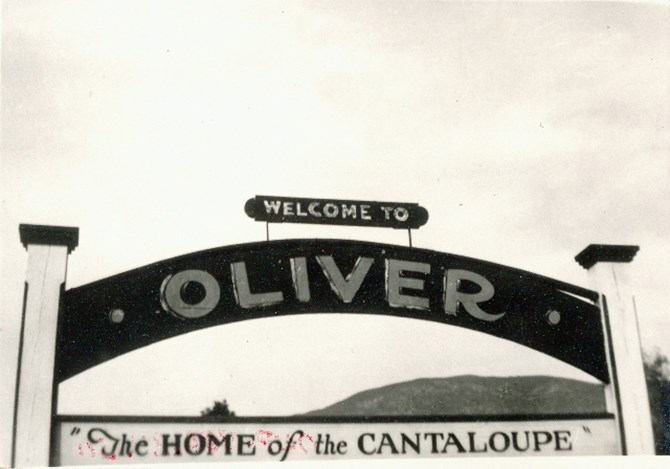Long before vineyards and winemaking, cantaloupe was king in Oliver

PENTICTON - Long before the Town of Oliver became known as the Wine Capital of Canada, it was well known nationally for its ability to grow another tasty treat.
For over a decade in the late 1920s and early 1930s, Oliver’s fame came from growing cantaloupe, eventually becoming known far and wide as the Cantaloupe Capital of Canada.
According to research from the Oliver Archives, Oliver got its start as a community in 1918 when the government purchased 22,000 acres of land around Oliver and sold it to returning First World War vets.
The area’s capacity to grow things wasn’t lost on the soldiers, many of whom began fruit orchards.
Orchardists planted crops such as melons between the rows of maturing fruit trees in order to create income until the trees were old enough to bear fruit.
By the early 1920s, the community began establishing its reputation for growing cantaloupe, which became a major agricultural product in the area’s early farming years.
Oliver Archives curator Veronica Parkes says Oliver’s hot climate was good for growing cantaloupe, which at the time was the only place they were grown besides California.
The government even printed a booklet in 1931 entitled “Cantaloupe growing in B.C. Dry Belt.”
The Town of Oliver’s history webpage recounts other crops were grown which included tobacco and tomatoes, but cantaloupe was the chief crop, and between 1926 and 1936 Oliver’s reputation for growing the succulent melon became known on a national scale.
When the Canadian Pacific Railway built its southern Okanagan spur, a train became so well known for the produce it was carrying it was referred to as “Cantaloupe Annie.” In 1923 alone, 25 carloads at 12 tons each of cantaloupe were shipped out of the Okanagan by rail.
Oliver resident Jack Thorpe wrote of his memories of Cantaloupe Annie in a letter to the editor to the Oliver Chronicle written in 1999, in which he recalled the train pulling into Oliver stations where he and his friends would gather, asking the engineer for a cantaloupe.
Thorpe recalled the wonder of a child when the engineer tossed the kids some culled fruit that was stored in the locomotive.
“We would call out to Annie to give us a cantaloupe. And, mysteriously to a child, a few cantaloupes would be tossed to us,” Thorpe recalls.
The 1960 edition of the Okanagan Historical Society recalls packinghouses in 1933 having more cantaloupe than they could handle.
The community eventually celebrated the importance of the melon with a Cantaloupe Festival where a contest for a Cantaloupe Queen was held each year.
Once orchards were well established, there was less need for farmers to grow ground crops in between the rows. Parkes says as the principal crop reached maturity, the practice of growing ground crops between the rows eventually declined.
To contact a reporter for this story, email Steve Arstad or call 250-488-3065 or email the editor. You can also submit photos, videos or news tips to the newsroom and be entered to win a monthly prize draw.
We welcome your comments and opinions on our stories but play nice. We won't censor or delete comments unless they contain off-topic statements or links, unnecessary vulgarity, false facts, spam or obviously fake profiles. If you have any concerns about what you see in comments, email the editor in the link above.


